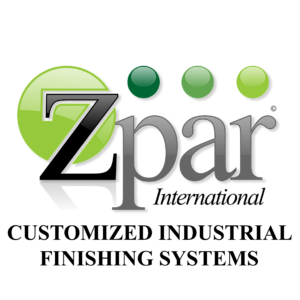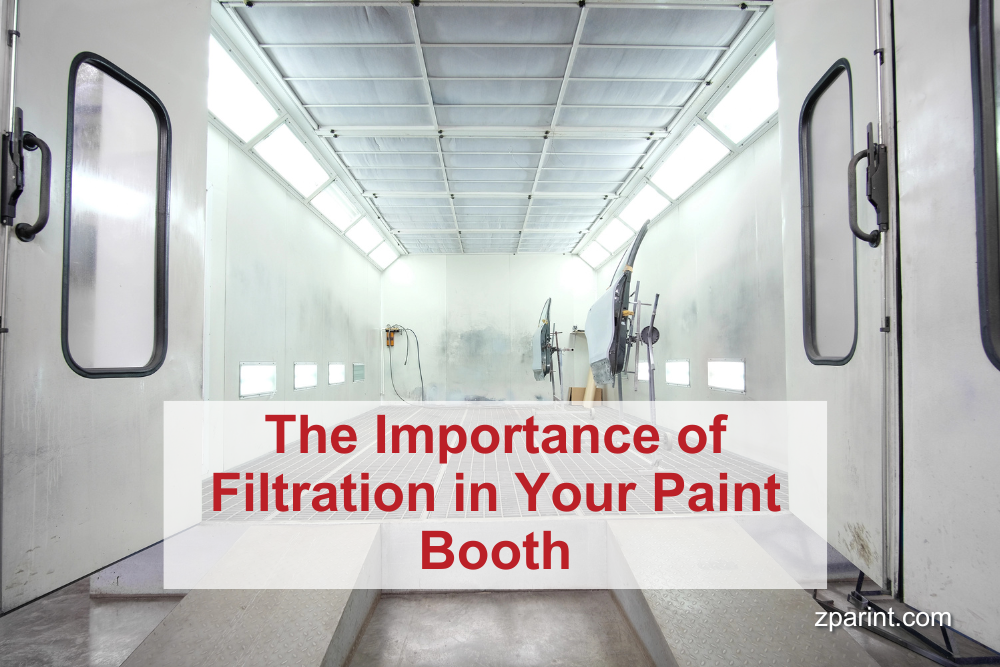Your paint booth filters are a deceptively important part of the whole industrial spray booth configuration. There are multiple types of filters employed in every properly configured paint booth and even more styles of filters for each of those types. The significance of each of those types and styles can hardly be underestimated. Like the air filter in your residential HVAC arrangement, they need to be cleaned and/or replaced on a regular basis. If they are not, they are no longer able to trap the particulate for which they are intended – and they obstruct and diminish the airflow. The same principle is true for spray booth filters but is exponentially more critical because the particulate being trapped, if not trapped, can create a combustible cloud, a combustible patina, or a flawed finish on the painted object. A clogged filter can also negatively affect air flow and air pressure within the booth. You have a few options for filtration, which an experienced, full-service spray booth installer like our team at Zpar can help you sort out for the best application.
The three broad categories of filters, based upon their location and function in the spray booth, are (a) Air Make Up Unit Filters, Intake filters, and Exhaust Filters. All three have fairly self-explanatory titles.
The air make up unit filter goes within the air make up unit or AMU, which is responsible for controlling air flow in the spray booth, ensuring that input and exhaust airflows are both sufficient and equivalent. As the forefront of defense, they reduce the filtration load of the downstream intake and exhaust filters. This is crucial, and there are several styles of filter that contribute to that function.
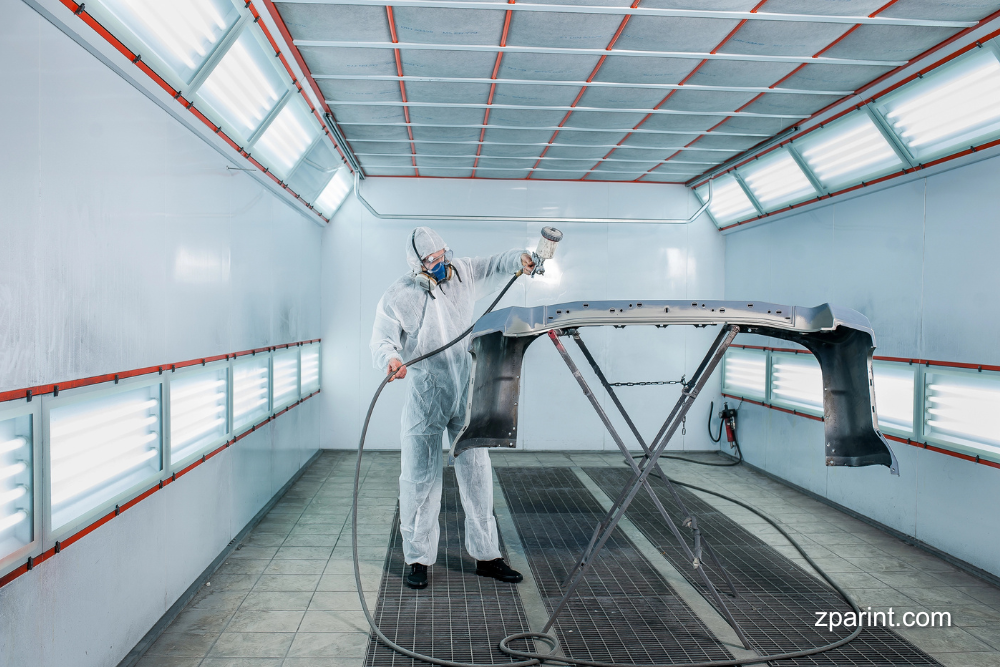
Media Pad Filters are the least expensive but also the least efficient in capturing particles.
Permanent Aluminum Washable Filters are more expensive but have greater longevity. Although they are not the most efficient in filtration, they can be washed and reused.
Pleated Filters are the most common AMU filters because they provide a good balance of economy and filtration efficiency. They are also available in high-temperature tolerant fiberglass format.
Pocket Bag Filters are more expensive but required for certain applications, and they have a higher dust retention capacity and efficiency.
Extended Surface Cube Filters have essentially the same performance and cost profile as Pocket Bag Filters, minus the heat tolerance.
Intake filters (with the assistance of the AMU filters) ensure and provide contaminant free airspace within the spray booth. That is crucial because contaminant particles as small as 10 microns can adversely affect the finish on the objects being painted. The specific filter used is dependent on the airflow system being utilized. Cross draft booths typically require green and white two-layered tackified media panels and are commonly found in the front door of the booth.
They do not require clips or additional hardware, unlike down draft booth pads installed in the ceiling, which do not require additional hardware but do necessitate the use of clips.
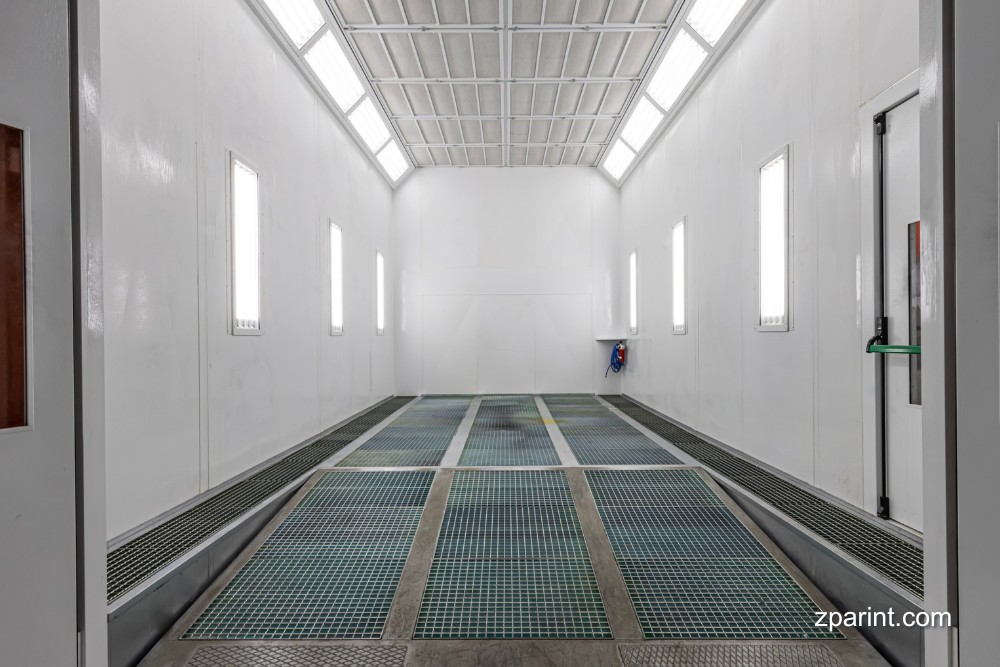
The green and white two-layered tackified filter consist of a regular filtration layer and a tacky layer to trap dirt particles. They are 100% synthetic and do not absorb moisture, but they do introduce minimal airflow resistance, which is an economical bonus.
Dust Guard Heavy Duty Panels operate on the same principles as the tackified filters, with an adhesive that prevents dust particle migration and increases dust holding capacity. They represent several improvements on the tackified filter model, as they are non-toxic and non-allergenic and carry a MERV 8 media rating.
At the top of the intake filter pyramid, there are High Efficiency Diffusion Media, with the maximum performance capability. They, like the tackified filters, do not absorb moisture. They are the standard for downdraft booths and normally require no additional hardware for installation. They also contribute no fiber shedding or silicone.
Exhaust filters are, as their name suggests, placed near the exhaust fan and ducting, to prevent dispersal of overspray particulate to the open air outside the spray booth and the building. They also protect that fan and ductwork from particulate accumulation (which would potentially reduce airflow and introduce an additional risk of combustion). The exhaust filters are universally single stage but come in a variety of formats.
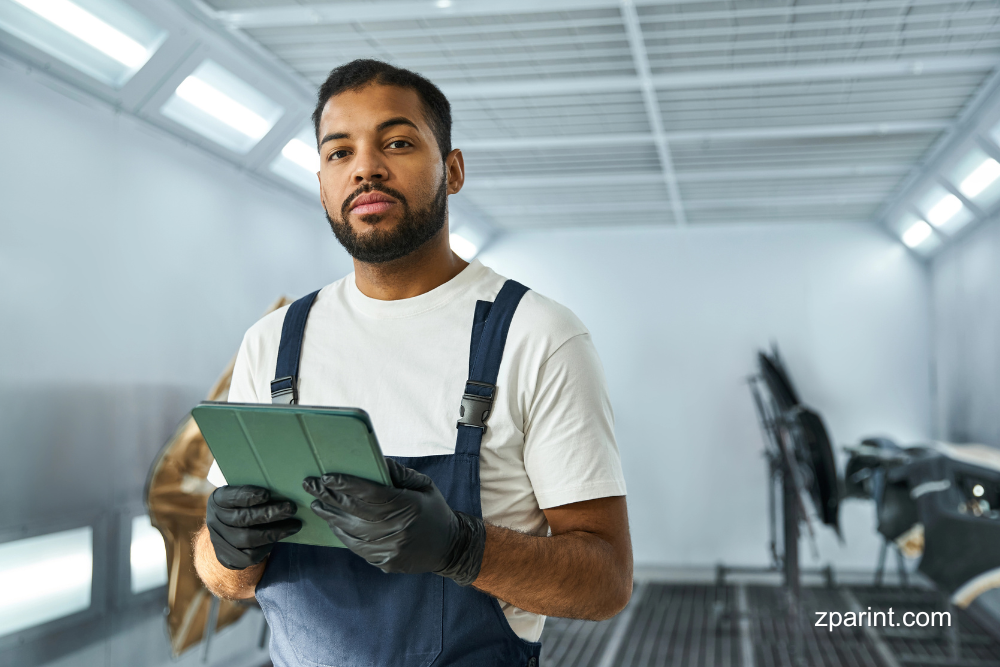
Accordion filters utilize V-shaped walls, which prevent overspray and bounce-back migration. They also have considerably longer longevity than poly, fiberglass, or mesh media.
Fiberglass Paint Arrestor Media utilize progressively denser and provide temperature resistance up to 180°C.
Paint Pockets Synthetic Paint Arrestors provide a high-efficiency overspray filter with high pint-holding capacity.
Mesh Paper Paint Arrestors offer standard efficiency, which can be increased to high efficiency when supplemented with a synthetic backing.
Extended Surface Cube Filters have high dust-holding capacity and efficiency. They are required in certain applications.
No matter which filters you choose for your paint booths, they all must be maintained and eventually replaced. If that doesn’t happen before the end of their useful life, particulate will remain in the airspace of the paint booth, potentially affecting the quality of the finish on your painted surfaces. As a general rule, intake filters should be replaced every 3-4 months and exhaust filters, every 3-4 weeks. Failure to do so can impact paint job quality and painters’ health.
As with all the myriad components of spray booth setup and operation, there are many approaches to filtration, as outlined here. The considerations to be balanced are the relative economy of initial purchase versus the long-term economy of longevity and efficiency – along with applicability of a specific filter type to the booth in which it is used. For expert guidance in the selection of the best value for your operation, use a qualified installer like our team here at Zpar. We will be there for you in the initial planning and installation and will remain available for all subsequent questions.
